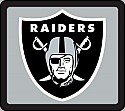 Growing up in history class it seemed like the entire south was united under the Stars and Bars of the Confederacy. As with all wars there are people who are for it and there are people who are against it. Few realize that every southern state had sent regiments to serve in the Federal army excluding South Carolina. Northern Alabama was pro-Union and when the Confederate Congress issued the first draft call in American history many southerners were outraged. For many Confederates the war was about a people fighting against an oppressive government that passed too many laws to control localities.
Growing up in history class it seemed like the entire south was united under the Stars and Bars of the Confederacy. As with all wars there are people who are for it and there are people who are against it. Few realize that every southern state had sent regiments to serve in the Federal army excluding South Carolina. Northern Alabama was pro-Union and when the Confederate Congress issued the first draft call in American history many southerners were outraged. For many Confederates the war was about a people fighting against an oppressive government that passed too many laws to control localities.
Many northern Alabamians refused to serve and Governor Frank Shorter of Alabama sent conscription parties to find and enlist the men who refused to serve.To avoid the draft meant jail and even death so Shorter thought that many unwilling southerners would just drop their objections without raising a fuss. The make matters worse the Confederate government and army had been unable to protect southern farms in the area from bushwackers and robbers. These thieves served on both sides during the conflict and usually stole livestock and burned homes to the ground after robbing them blind. To defend their families and property the Northern Alabamians began to filter into the Union lines and form regiments. It was from this stream that the 1st Alabama Cavalry was born.The 1st had almost one-thousand soldiers occupy its ranks during the Civil War including men from other states within the Confederacy besides Alabama. The unit filled traditional cavalry roles of the time; scouting, raiding, reconnaissance, flank guard and screening the army on the march. The troops had no regimental flag of its own but earned a good reputation while serving in many forgotten skirmishes and engagements. During the battles at Dalton, Resaca and Kennesaw Mountain in the Atlanta campaign the 1st saw its first major action and proved its value to the Federal army.Praises from Union generals blanked the reputation of the 1st Alabama Cavalry. "The best scouts I ever saw" said one Union officer. Another stated that their service was "invaluable" to Federal successes in Alabama, Tennessee and Georgia.

These men were so famous and effective that General Sherman chose them as his personal escort during his famous "March to the Sea". However the regiment would gain its greatest victory in 1865 as the war drew to a close. On March 10, 1865 the 1st Alabama Cavalry fought rebel forces near Monroe Crossroads in North Carolina. A surprise attack by famed Confederate cavalry commanders Wade Hampton and Joseph Wheeler shocked the 1st as the sun rose in the east. After a three hour and bloody conflict the 1st Alabama Cavalry was able to drive the Confederates off the field until help arrived. The Confederates lost 103 dead and many more wounded at a cost to the Federals of 18 dead, 70 wounded and 105 missing.After overseeing the surrender of the Confederate Army of Tennessee under General Joseph E. Johnston the 1st was mustered out of service in October 1865. The official website of the regiment reports that "In three years service the regiment lost 345 men killed in action, died in prison, of disease or other non-battle causes; 88 became POWs and 279 deserted. There is no accurate count of wounded." After the war many former soldiers of the 1st faced rejection and criticism by their loyal Confederate neighbors. This bitterness like the 1st itself is largely forgotten today. I highly recommend that you visit the website below and become more acquainted the 1st and its adventures. The site had photos of its members, pictures of its members gravestones and tons of other information. Its colonel is buried at Arlington National Cemetery. Today, many of its decedents run a reenactment group that educates people about the 1st and its storied history.
Here is the webpage:http://www.1stalabamacavalryusv.com/
Further Reading on the 1st Alabama: Todd, Glenda McWhirter. First Alabama Cavalry, U.S.A.: Homage to Patriotism. Bowie, Md: Heritage Books, 1999.





2 comments:
Mike,
I've recently published a revised edition of my book on the 6th Tennessee Cavalry, another Southern Unionist regiment. If you're interested, please visit my site at www.kevindmccann.com
Please check these words. Sounds like the 1st fought their fellow Union troops:
However the regiment would gain its greatest victory in 1865 as the war drew to a close.On March 10, 1865 the 1st Alabama Cavalry fought Union forces near Monroe Crossroads in North Carolina.
Post a Comment